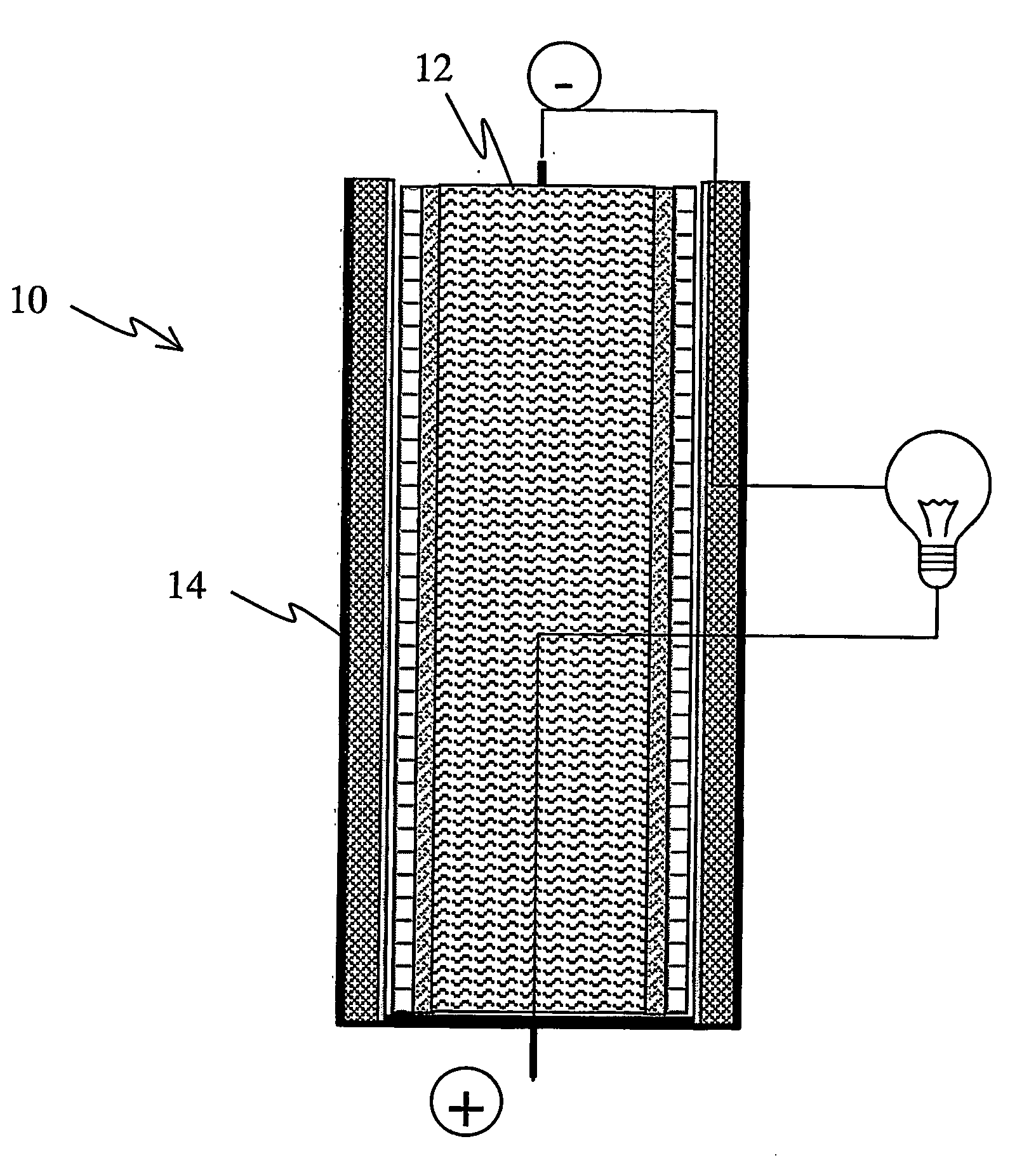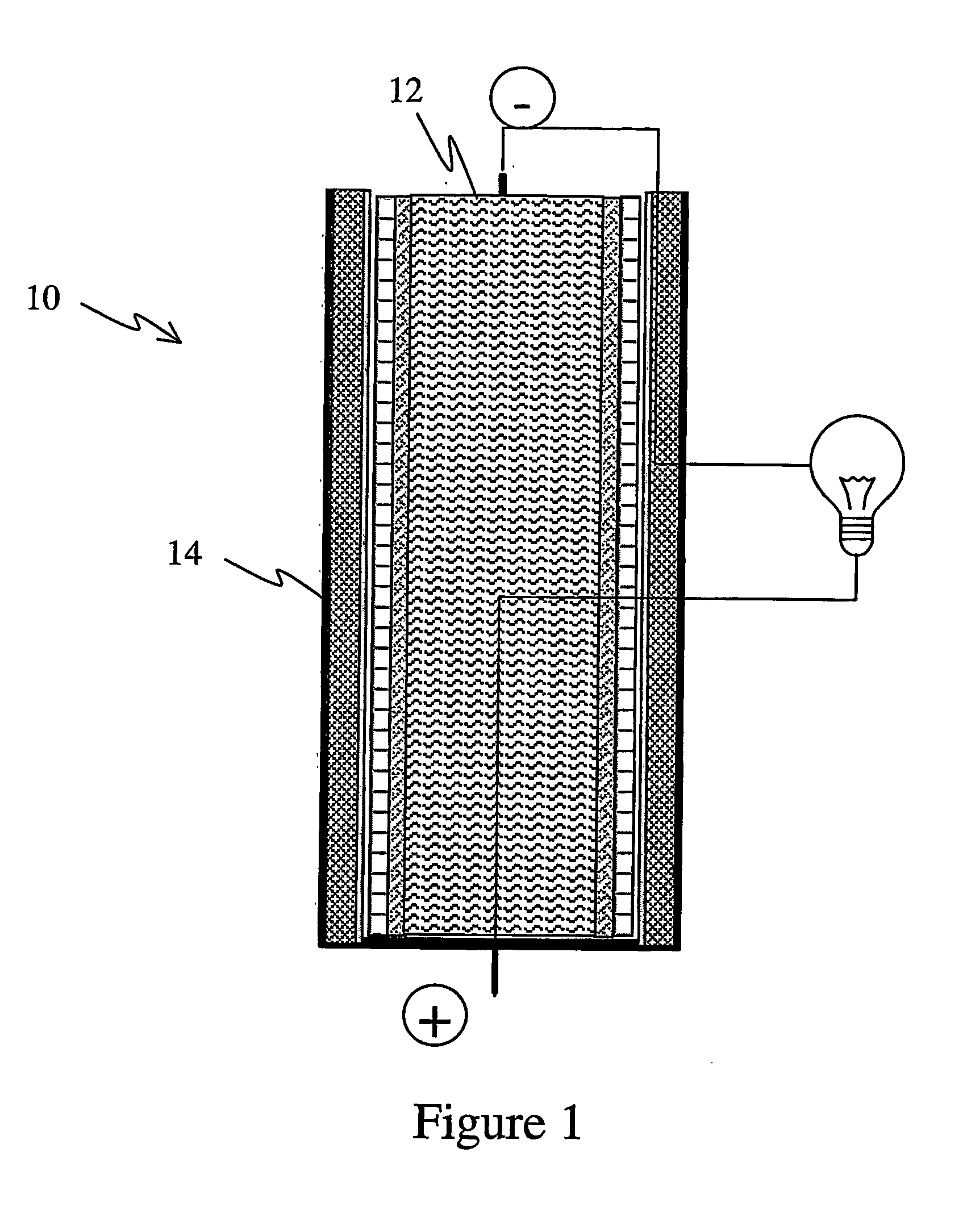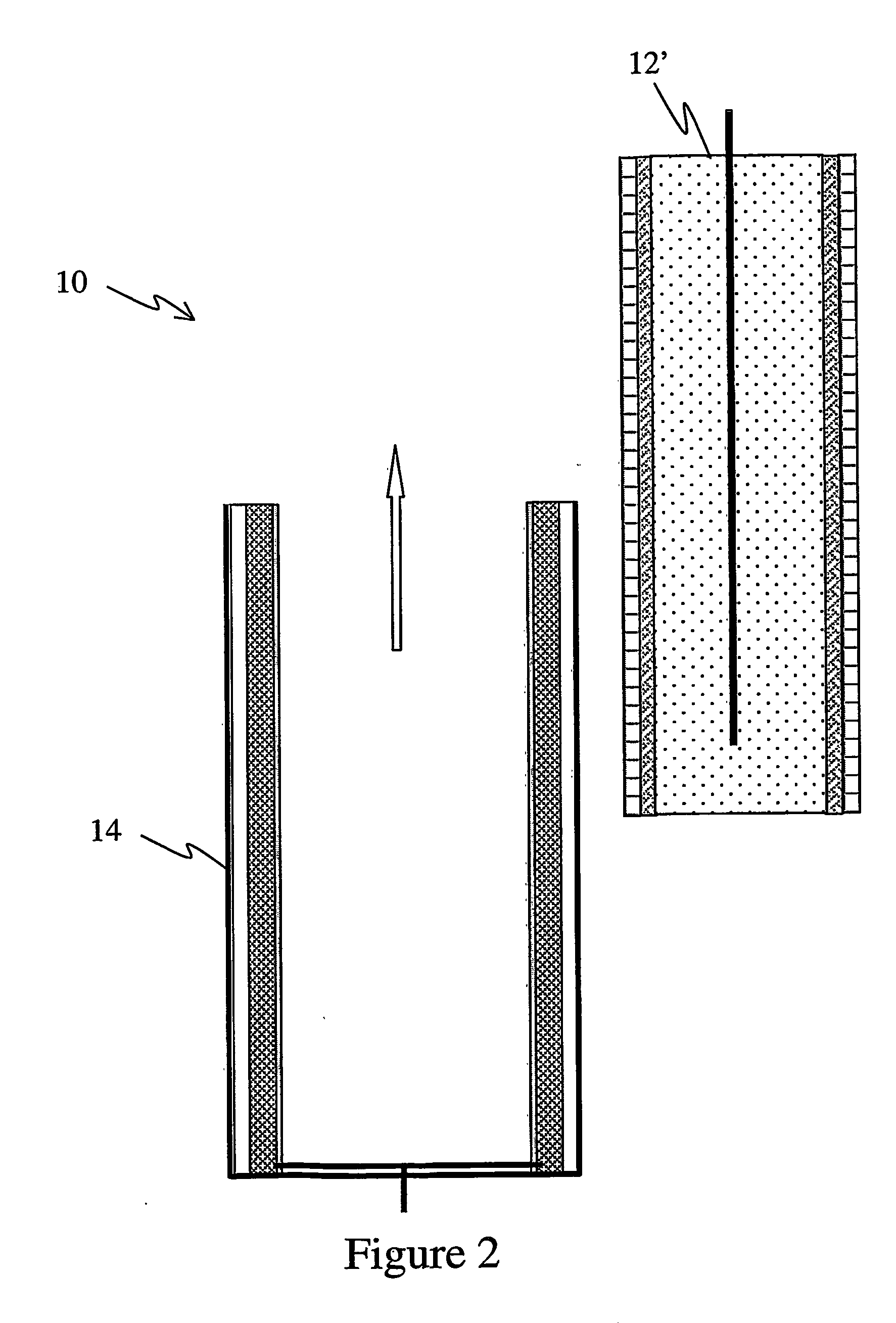Metal air cell system
a technology of metal air cells and metal air, which is applied in the field can solve the problems of insufficient supply of energy provided by metal air electrochemical cells, the inherent volume expansion of metal electrochemical cells, and the obstacle to refueling of metal air cells, so as to facilitate the removal of the anode structure
- Summary
- Abstract
- Description
- Claims
- Application Information
AI Technical Summary
Benefits of technology
Problems solved by technology
Method used
Image
Examples
Embodiment Construction
[0017] A metal air cell includes an anode and the cathode having a readily removable anode structure. Features of the anode structure, cathode structure, gel formulations, and other aspects of the metal air cell system are described herein.
[0018] Referring now to the drawings, an illustrative embodiment of the present invention will be described. For clarity of the description, like features shown in the figures shall be indicated with like reference numerals and similar features as shown in alternative embodiments shall be indicated with similar reference numerals.
[0019] Referring now to FIG. 1, a metal air electrochemical cell 10 of a generally prismatic configuration is depicted. The cell 10 includes an anode structure 12 within an essentially U-shaped cathode structure 14. The anode 12 and the cathode 14 are maintained in electrical isolation and ionic communication through a separator, described further herein.
[0020] Oxygen from the air or another source is used as the react...
PUM
 Login to View More
Login to View More Abstract
Description
Claims
Application Information
 Login to View More
Login to View More - R&D
- Intellectual Property
- Life Sciences
- Materials
- Tech Scout
- Unparalleled Data Quality
- Higher Quality Content
- 60% Fewer Hallucinations
Browse by: Latest US Patents, China's latest patents, Technical Efficacy Thesaurus, Application Domain, Technology Topic, Popular Technical Reports.
© 2025 PatSnap. All rights reserved.Legal|Privacy policy|Modern Slavery Act Transparency Statement|Sitemap|About US| Contact US: help@patsnap.com



